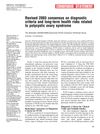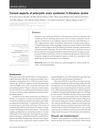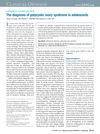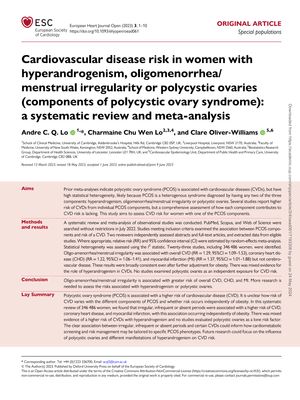TLDR Women with irregular periods have a higher risk of heart disease.
This systematic review and meta-analysis examined the cardiovascular disease (CVD) risk in women with components of polycystic ovary syndrome (PCOS), specifically hyperandrogenism, oligomenorrhea/menstrual irregularity, or polycystic ovaries. Analyzing data from 23 studies involving 346,486 women, the study found that oligomenorrhea/menstrual irregularity is associated with a higher risk of overall CVD (RR = 1.29), coronary heart disease (CHD) (RR = 1.22), and myocardial infarction (MI) (RR = 1.37), independent of obesity. The evidence for hyperandrogenism's role in CVD risk was mixed, and no studies evaluated polycystic ovaries as an independent risk factor. The findings suggest that irregular, infrequent, or absent periods significantly increase the risk of certain CVDs, highlighting the need for tailored cardiometabolic screening and risk management for specific PCOS phenotypes. Further research is needed to explore the impact of hyperandrogenism and polycystic ovaries on CVD risk.
26 citations
,
December 2020 in “International Journal of Molecular Sciences” Treatments for PCOS aim to reduce androgen levels and improve insulin sensitivity to lower cardiometabolic risk.
5 citations
,
January 2017 in “Dermato-endocrinology” Postmenopausal women with past hirsutism or irregular periods have more heart and lung diseases.
 37 citations
,
January 2005 in “Dermatology Online Journal”
37 citations
,
January 2005 in “Dermatology Online Journal” Women under 55 with hair loss (AGA) may have a higher risk of heart disease (CAD).
 4809 citations
,
January 2004 in “Fertility and Sterility”
4809 citations
,
January 2004 in “Fertility and Sterility” The 2003 consensus updated PCOS diagnosis criteria and highlighted increased risks of diabetes and heart disease for those affected.
 15 citations
,
December 2016 in “Revista Da Associacao Medica Brasileira”
15 citations
,
December 2016 in “Revista Da Associacao Medica Brasileira” Polycystic ovary syndrome is a common hormonal disorder in women, linked to increased risk of metabolic and heart diseases, and needs more research for better understanding and treatment.
 10 citations
,
January 2011 in “Skin therapy letter”
10 citations
,
January 2011 in “Skin therapy letter” Women with PCOS often have acne because of high androgen levels, and the article reviewed how to treat this type of acne.
 212 citations
,
May 2010 in “American Journal of Obstetrics and Gynecology”
212 citations
,
May 2010 in “American Journal of Obstetrics and Gynecology” Diagnosing PCOS in teenagers is challenging and should use strict criteria to avoid misdiagnosis and unnecessary worry.
 4809 citations
,
January 2004 in “Fertility and Sterility”
4809 citations
,
January 2004 in “Fertility and Sterility” The 2003 consensus updated PCOS diagnosis criteria and highlighted increased risks of diabetes and heart disease for those affected.





